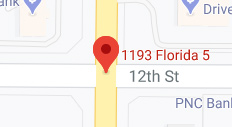Nissen Fundoplication Surgery with Hiatal hernia repair
Nissen Fundoplication is a surgical procedure to treat gastro esophageal reflux disease (GERD). This surgery is also performed to repair hiatal hernia.
GERD occurs when stomach contents reflux and enter the lower end of the esophagus (LES) due to a relaxed or weakened sphincter. GERD is treatable disease and serious complications may occur if left untreated.
A hiatal hernia occurs when part of your stomach slides through the diaphragm, the muscular sheet that separates the lungs and chest from the abdomen, and protrudes into your chest cavity. Hiatal hernia is more common and affects people of all ages. Hiatal hernia may not cause any symptoms but patients may experience chest pain, heart burn, belching, and hiccups. A hiatal hernia may contribute to GERD and can result in severe heart burn.
Surgical Procedure
Nissen Fundoplication is performed as day surgery either in the hospital or outpatient surgery center usually with the patient under general anesthesia.
The surgeon uses a needle to inject a harmless gas into the abdominal cavity near the belly button to expand the viewing area of the abdomen giving the surgeon a clear view and room to work. The surgeon makes a small incision in the upper abdomen and inserts a tube called a trocar through which the laparoscope is introduced into the abdomen. Additional small incisions may be made for a variety of surgical instruments to be used during the procedure.
During the procedure, your surgeon will repair the hiatus hernia first. The hiatus hernia is corrected by bringing your stomach down into your abdominal cavity. Sometimes, your surgeon may use a type of mesh to repair it. Your surgeon then wraps the upper part of the stomach, the fundus, around the lower esophagus to create a valve, suturing it in place. This surgery strengthens the sphincter and helps prevent stomach acid and food from flowing back into esophagus.
The laparoscope and other instruments are removed and the gas released.
The tiny incisions are closed and covered with small bandages.
Laparoscopy is much less traumatic to the muscles and soft tissues than the traditional method of surgically opening the abdomen with long incisions (open techniques).
Post-Operative Guidelines
You may feel soreness around the incision areas. Your surgeon may give you a prescription pain medicine or recommend NSAID’s (non-steroidal anti-inflammatory drugs) for the first few days to keep you comfortable. If the abdomen was distended with gas, you may experience discomfort in the abdomen, chest, or shoulder area for a couple days while the excess gas is being absorbed.
Contact your doctor immediately if you have a fever, chills, increased pain, bleeding or fluid leakage from the incisions, chest pain, and shortness of breath, leg pain, or dizziness.
Risks and Complications
Most patients do not have complications after Nissen Fundoplication; however complications can occur and may include:
- Post-operative fever and infection
- Injury to blood vessels
- Injury to stomach or esophagus
- Swallowing difficulties
- Gas embolism
- Adhesions – Extensive scar tissue formation can form in the surgical area.
- Return of the hiatal hernia
Click on the below tabs to know more
Procedures
- Hernia RepairLaparoscopic Hernia Repair – TEP and TAPPHernia Repair — Open Surgery for Inguinal Hernia
- EndoscopyGastroscopyERCPColonoscopyFlexible Sigmoidoscopy
- Adhesion
- Laparoscopic Cholecystectomy
- Bile Duct surgery
- Pancreas Surgery
- Anti-reflux Surgery
- Gastrojejunostomy
- Splenectomy
- Appendicectomy
- Polypectomy
- Bowel Resections (Colectomy)
- Laparoscopic Surgery















